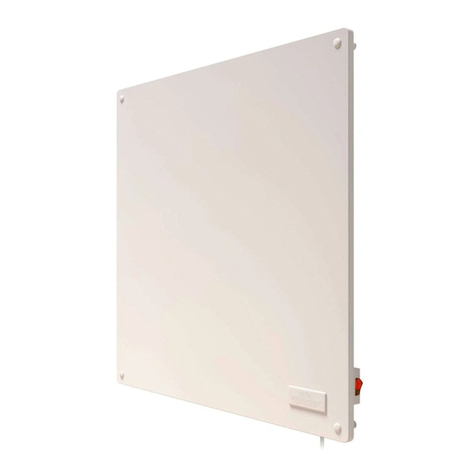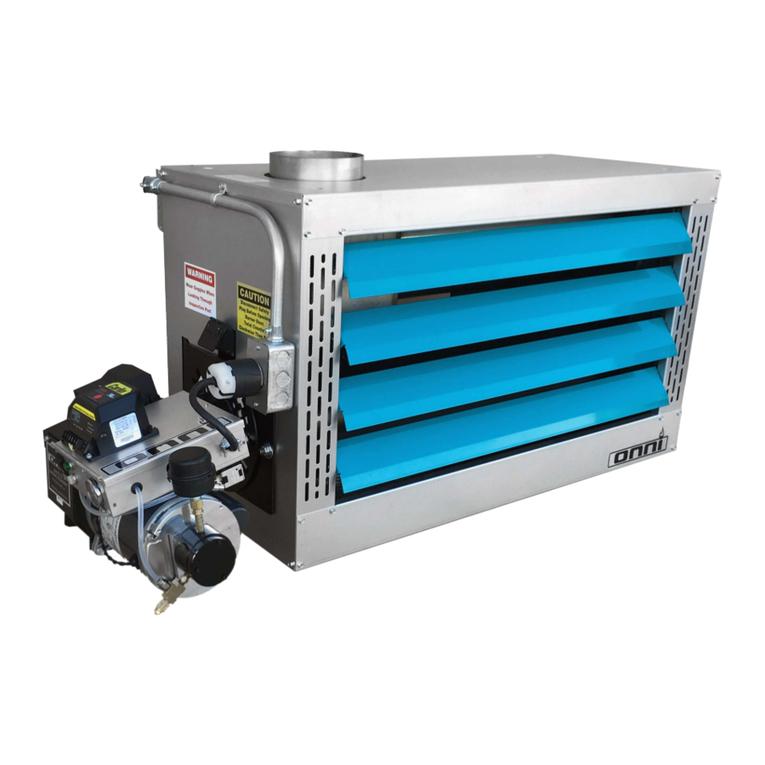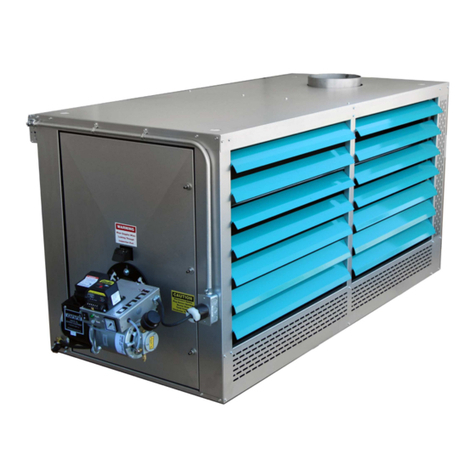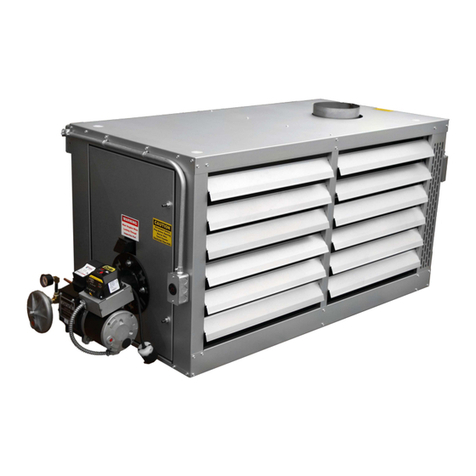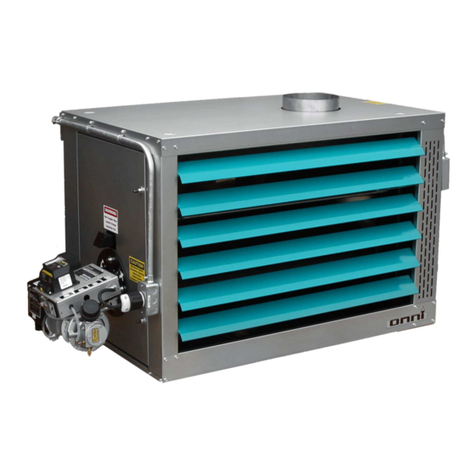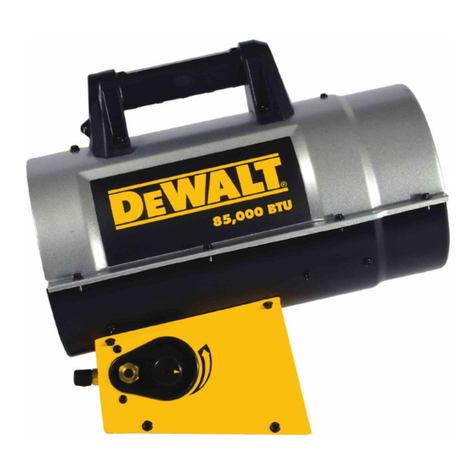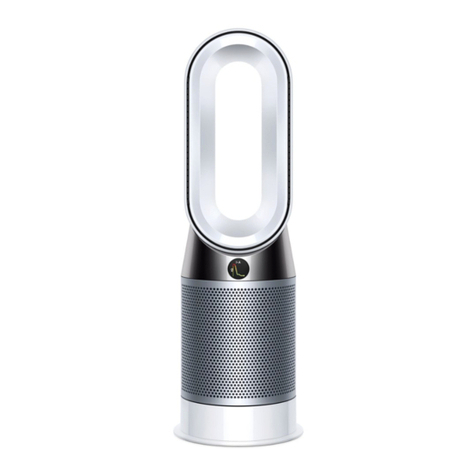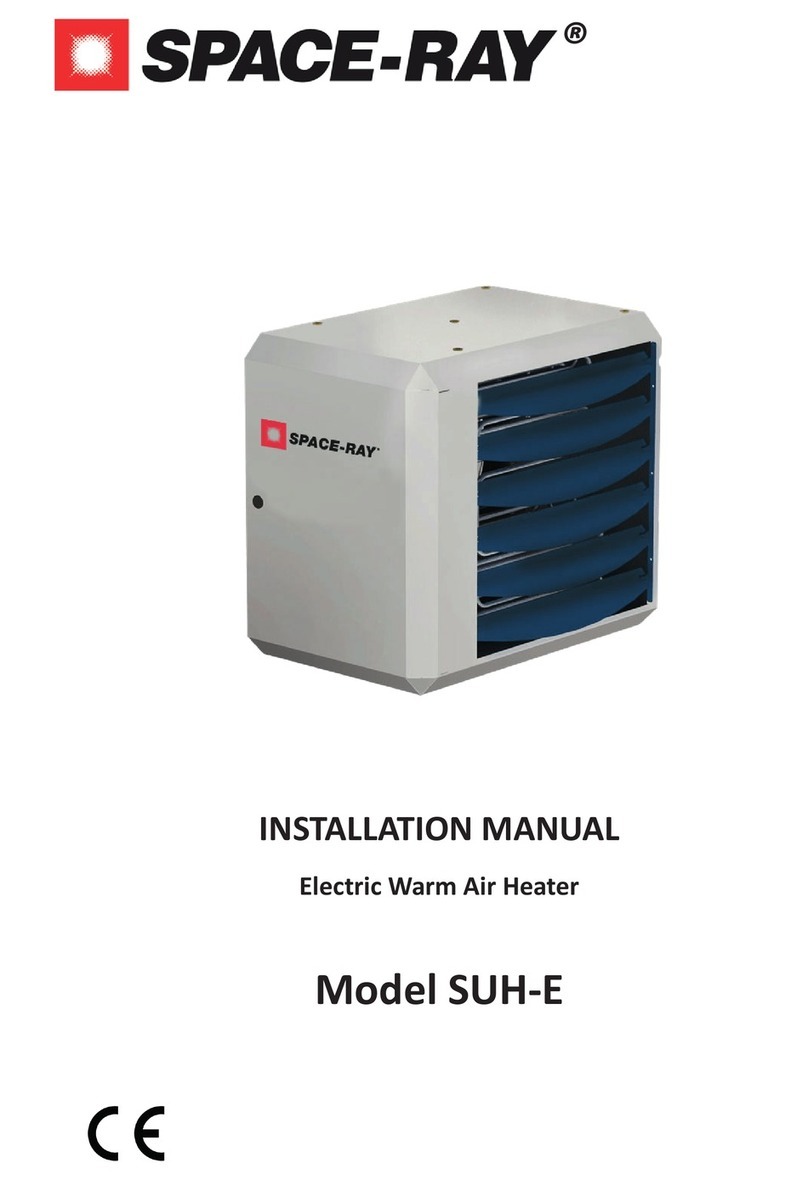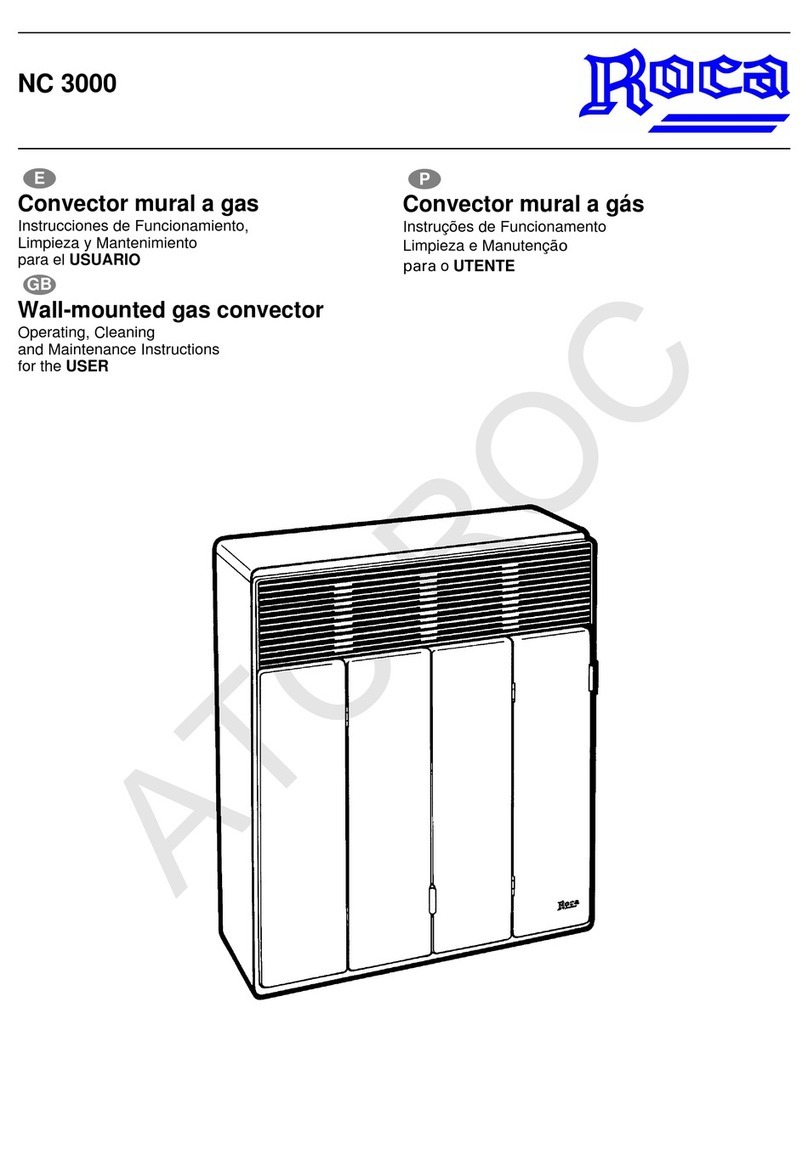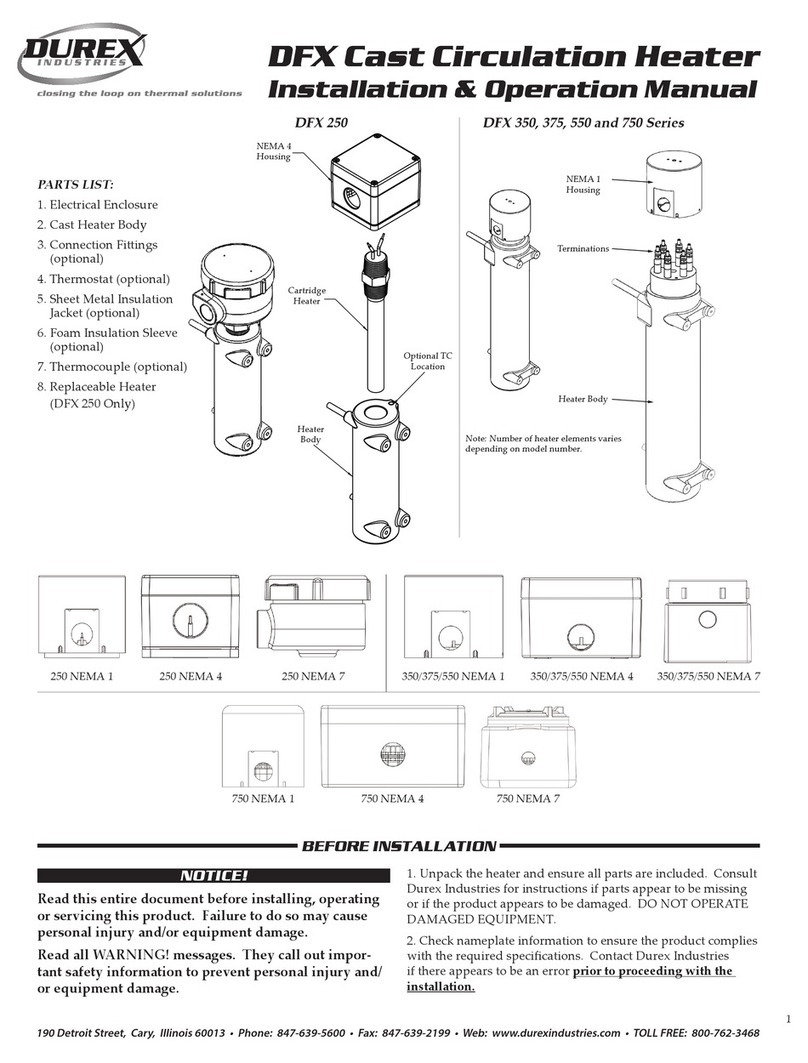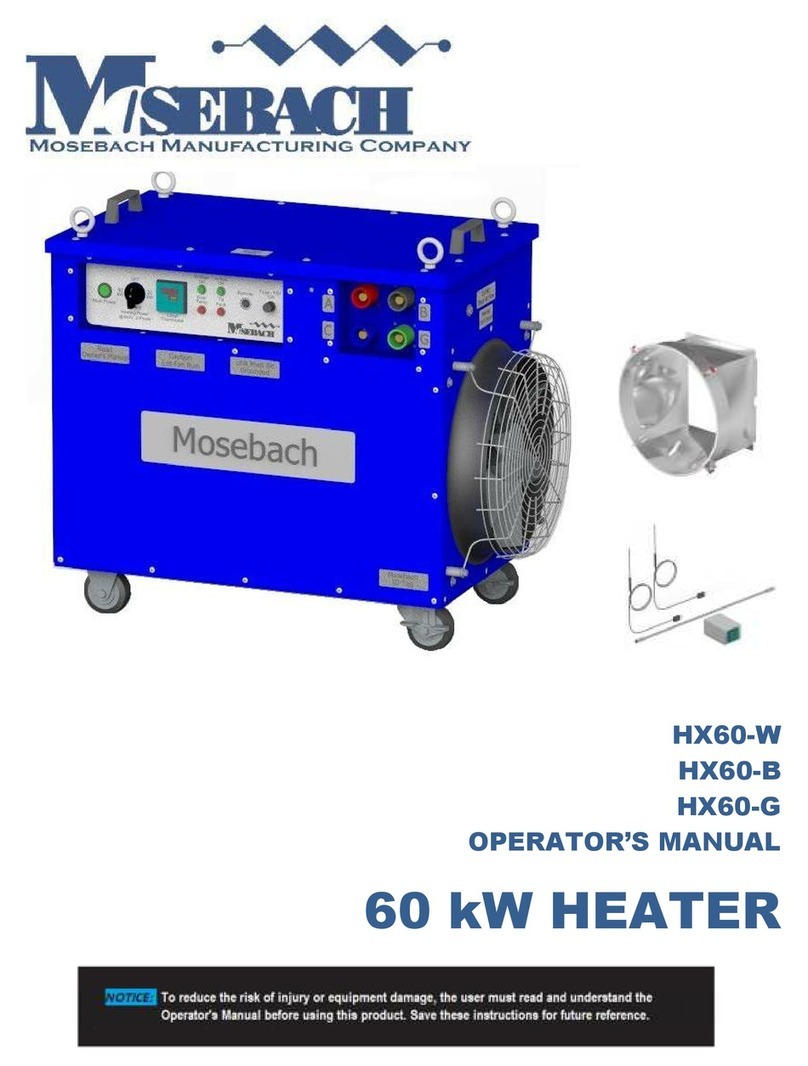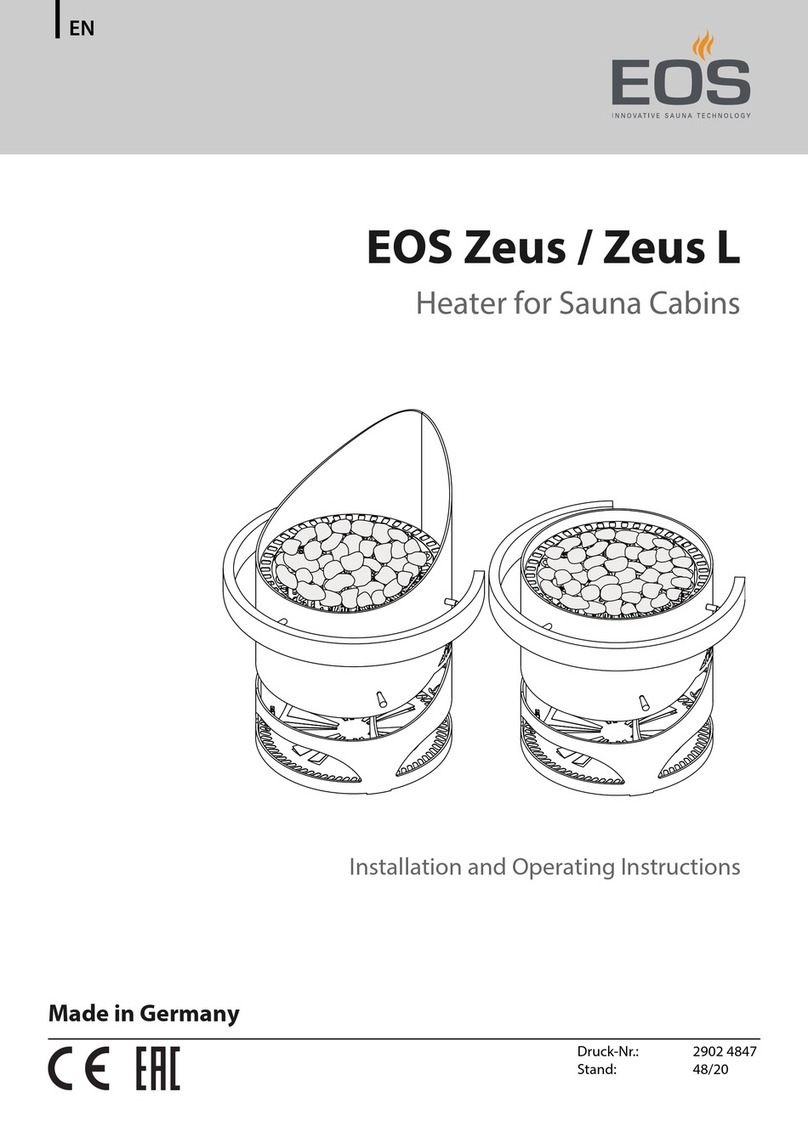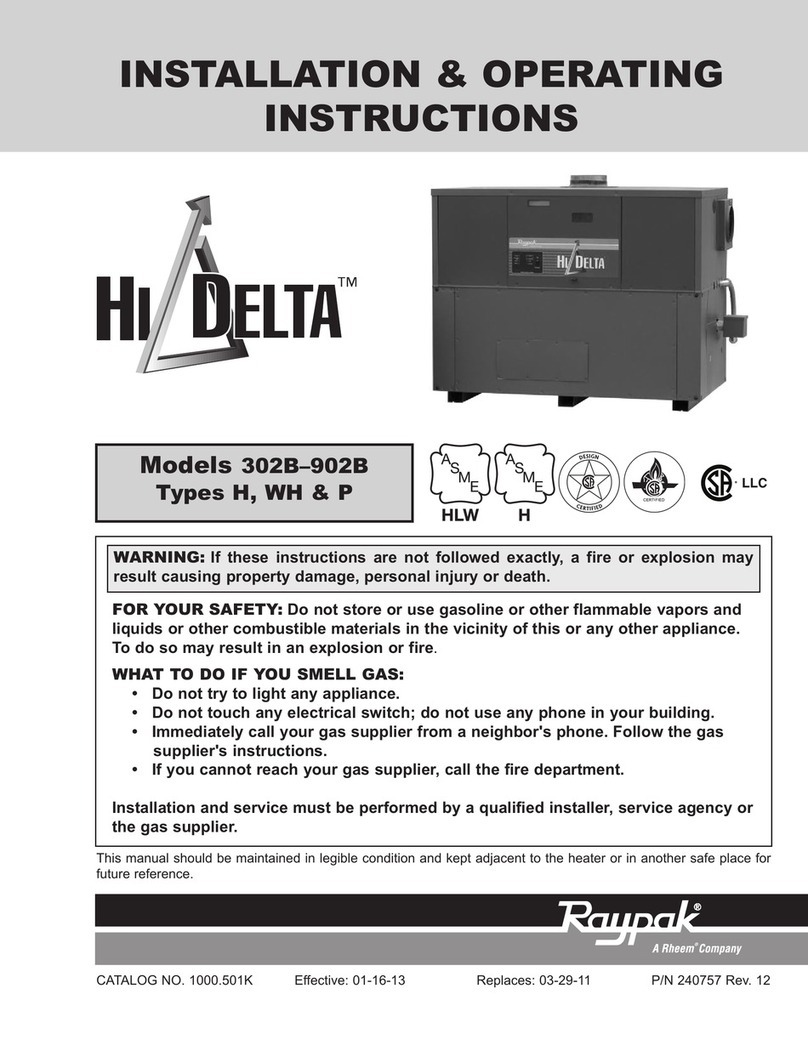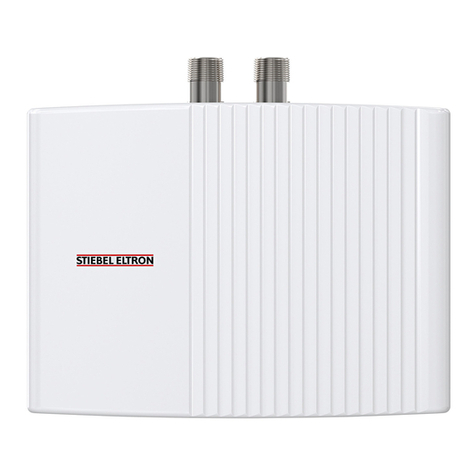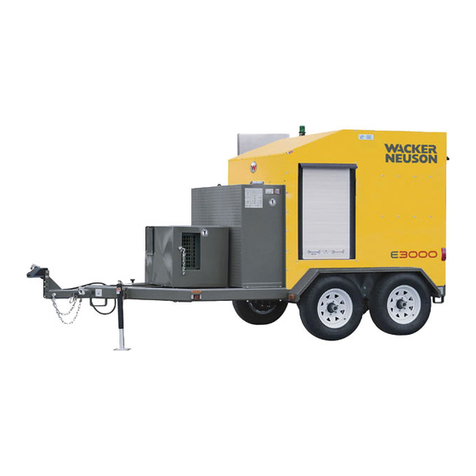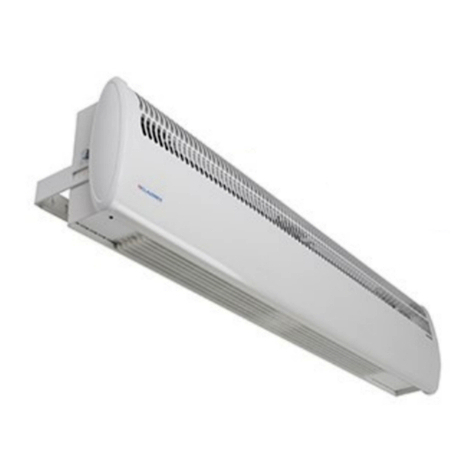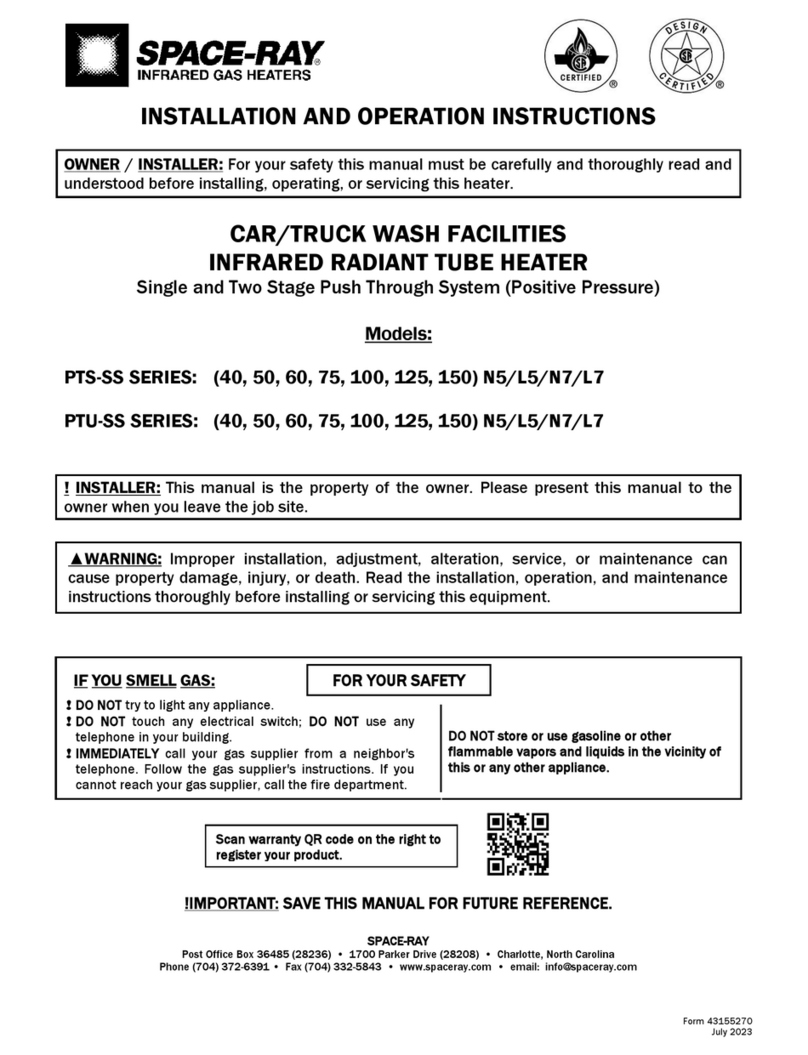
Page 18OMNI by EconoHeat
♦Most Likely •Less Likely ♣Least Likely
Symptom Cause Remedy
1. Heater shuts
o
♦Manual reset ♦
R
equiring manual restart
b
reset button on.
2. Loss
o
prime overnight ♦
V
acuum air leak i
n
uel line ♦Check all
uel connections. Tight
en
ittings.
W
on
t hold vacuum ♣Plugged pump screen ♣Check pump screen, m
a
need cleaning-to access, remove pump cover
IS TANK EMPTY? •Plugged
e
r or tank oil empt
•Clean
ilter. Using vent port, reprime pump (See Figure 6 & 7).
3. Fails to start. ♦
V
acuum Leak ♦Open bleeder port i
air present. Check and tighten
ittings.
♦Inadequate Fuel Suppl
♦Clean
ilter. Check all
uel connections. Tighten
ittings.
•No Pressure •Check, m
a
need cleaning
to access, remove pump cover.
•Using vent port, reprime pump (See Figure 6 & 7)
•No Pre-heat •Be sure all wiring to pre-heater is tight-no loose connections.
•Bad
e
rod-
R
eplace. Continuit
at terminals.
•Auto start circuit not
unctioning •Check circuit control board and replace i
necessar
y
(Call Factor
•Check continuit
at terminals
o
irerod limit snap switch.
R
eplace i
needed.
•No Arc •Check springs to electrode rod adjustment (under tr
an
ormer)
make sure t
he
make good contact. Open burner door and make
sure electrode tips ar
en
t touchi
n
lame cone.
R
eadjust.
•No Air Pressure •Check pressure regulator and adjust. Check air suppl
line
or
restrictions or leaks. Pull compressor cover and inspect carbon
vanes. M
a
need to replace. Check
ilter, clean i
needed.
4.
R
educed air pressure, ♦Gauge m
a
be bad. ♦
R
eplace gauge.
cannot increase. ♦Intake
ilter mu
ler is plugged ♦
R
emove & Clean with carburetor cleaner, dr
thoroughl
y
Do Not Use.
with dust or dirt.
♣Compressor vanes m
a
be worn. ♣
R
eplace carbon canes.
•Exposed to water. •
R
emove cover, clean rust with emer
cloth.
5. Hard starting diminished ♦Partia
plugged
e
r. ♦Clean
ilter. Using vent port-reprime pump (See Figure 6 & 7)
lame. ♣Out
o
uel ♣
Re
ill Storage.
♣No oil to burner ♣Clean pump screen-
R
emove pump cover. Using vent
port, reprime pump. (See
igure 6 & 7)
•
R
estriction in nozzle usuall
onl
•
R
emove nozzle and check
or
oreign objects. (See Figure 9 and 11)
when initiall
installed. New lines •Aluminum Block Pre-heater inside burner should not build
m
a
have
oreign material in them. up carbon. I
carbon is present, pre-heat circuit is mal
unctioning.
Thermocouple heat sensor wire could have open circuit.
Heat control board m
a
have blown circuit and circuit boar
d
use.
Inspect both and replace either i
needed. (See Figure 11).
•Air band open t
oo
ar •Close air band
while viewing
lame; open air band
slowl
until combustion chamber is clear, not orange.
6. Heater
cc
es
requentl
♦Heater over
iring. ♦Investigate and locate reason
or over
iring. I.e., nozzle
without thermostat eroded, pump not
unctioning properl
, decrease pump motor speed.
temperature setting being (S
ee
or rem
ed
)
achieved in area to be ♣Temperature setting wrong
heated. On high limit
an
a
et
switch. ♣Check temperature setting and adjust as necessar
y
•High limit
a
et
switch bad •
R
eplace high limit
an
a
et
switch.
7. Heater rumbles and ♦Pump setting wrong ♦Pump not
unctioning properl
-over
iring. M
a
need
R
PM readjust.
excessive heat blow back
R
eset
lame slightl
less than ½w
a
down tube combustion chamber.
rom
lame vision port. Use adjustment knob on pump motor. (See Figure 7).
♣Dra
t incorrect. I
proper dra
t♣Set dr
a
t. Clean out combustion chamber and exchangers
can
t be achieved, heater could
o
ash. Check dr
a
t-reset i
needed.
have excessive amount
o
ash and
w
on
t allow
s
icient dra
t.
8. Heater establishes
lame ♦Phot
oe
e cant
ee
lame. ♦Clean photo
e
e
which is smoked up
b
back dr
a
t smoke.
but locks out or shuts
o
.♣Due to back dr
a
t. Flame end ♣Swing open burner door and clean ash buil
ds
rom
lame
Need to reset primar
y
cone m
a
have ash. end cone. (See Figure 5 & 8).
•Flame too small •Increase pump motor speed (See Figure 7).
9. Proper dr
a
t setting ♦Negative dr
a
t in building ♦M
a
need to install power vent
/
dr
a
t inducer
s in stack.
cannot be achieved or exhaust
ans present. (See Figur
e
or wiring).
♣Excessive ash buil
ds/
Heater ♣Clean ash and soot
rom combustion chamber and heat
exchangers.
10. Poor or reduced heat ♦Flame too small ♦Nozzle m
a
be plugged with debris-usuall
a
ter
ilter is cleaned.
production. ♣Entir
e
uel suppl
m
a
be plugged. ♣Clean
ilter both, oil strainer and oil pump screen.
•Excessive ash buildup exchangers •Clean ash
rom combustion chamber and exchangers.
•Through vision port, check
lame •M
a
need to readjust pump
R
PM. (Use knob on pump motor).
to see i
lame is smaller than usual. (See Figure 7).
Troubleshooting




















